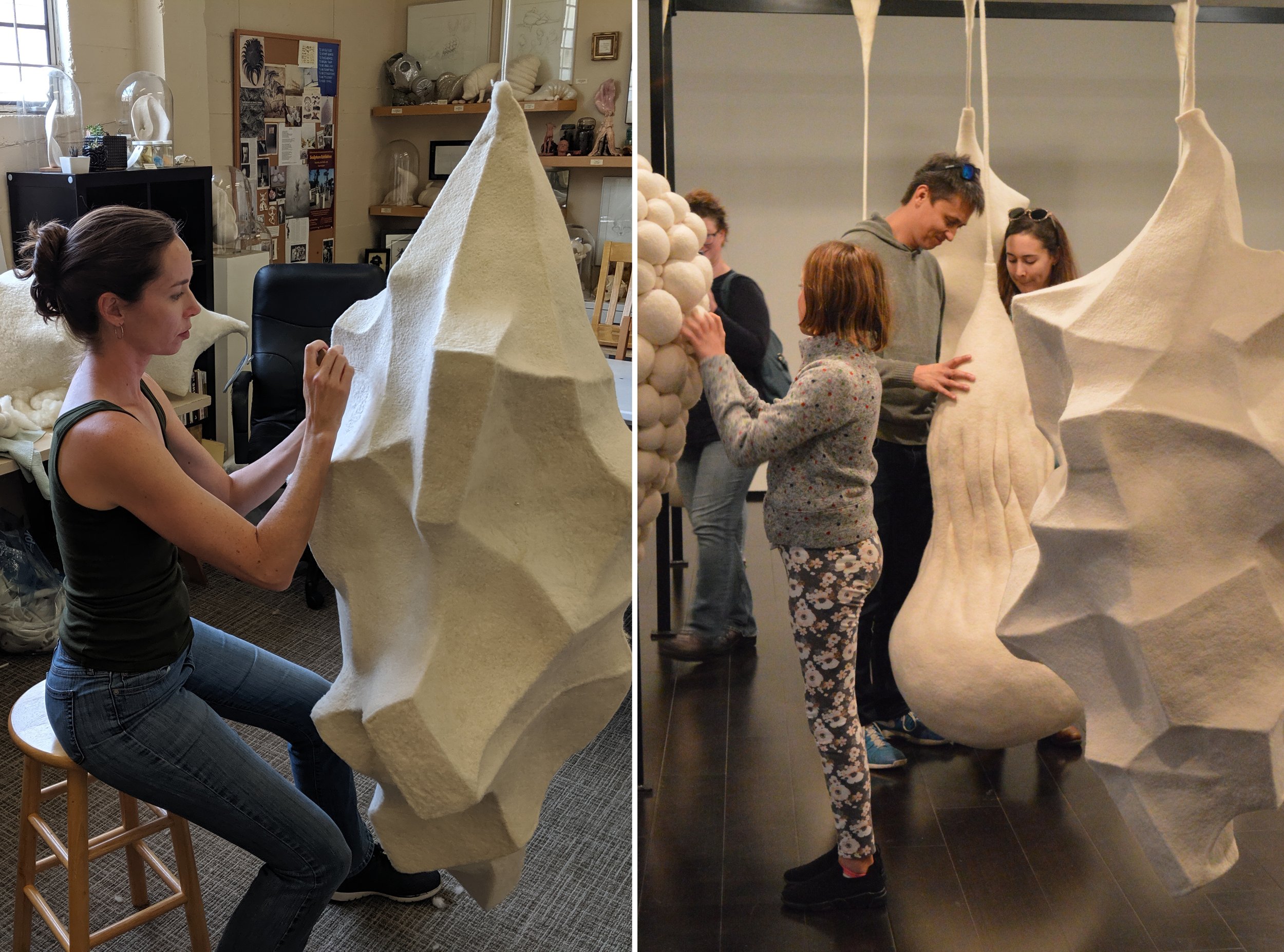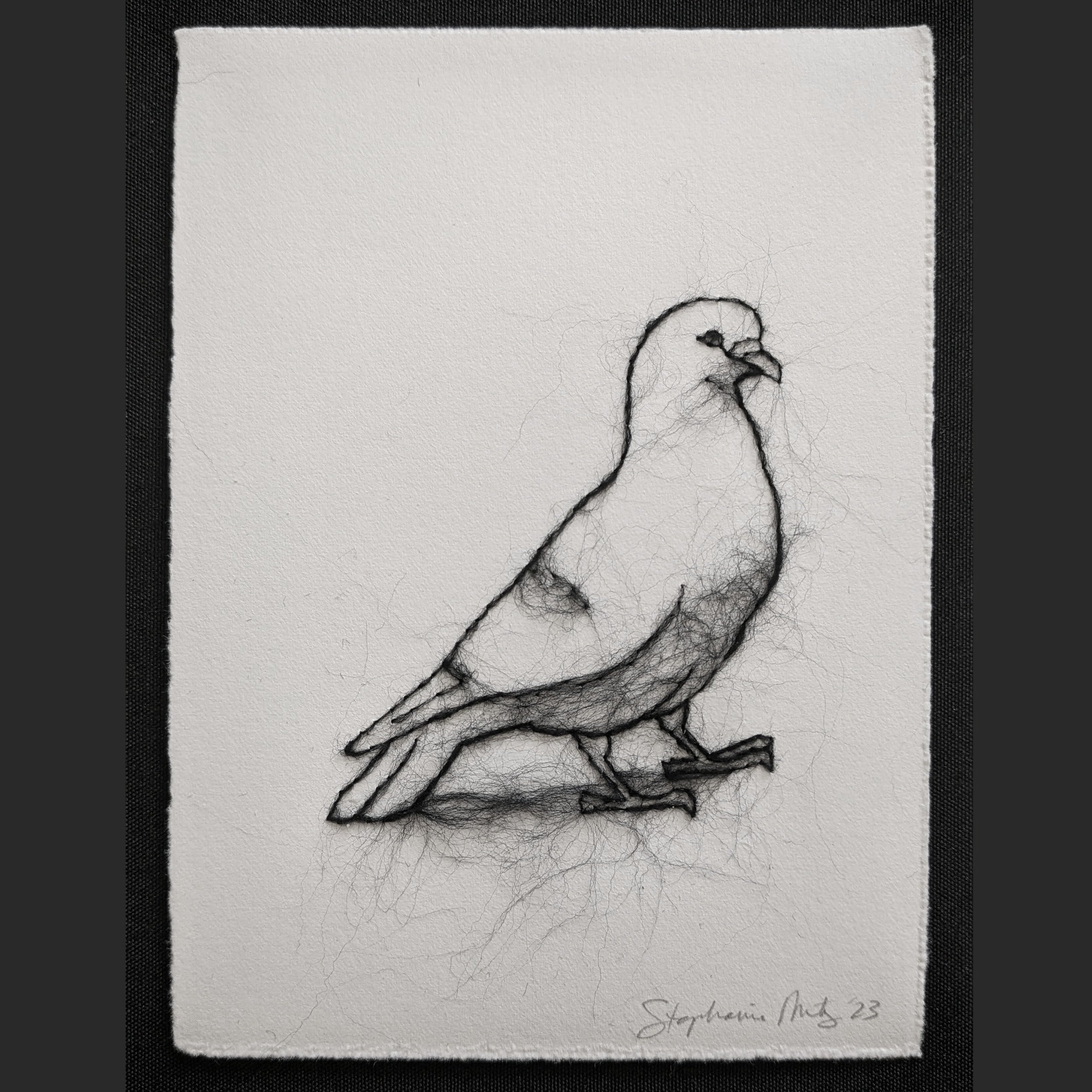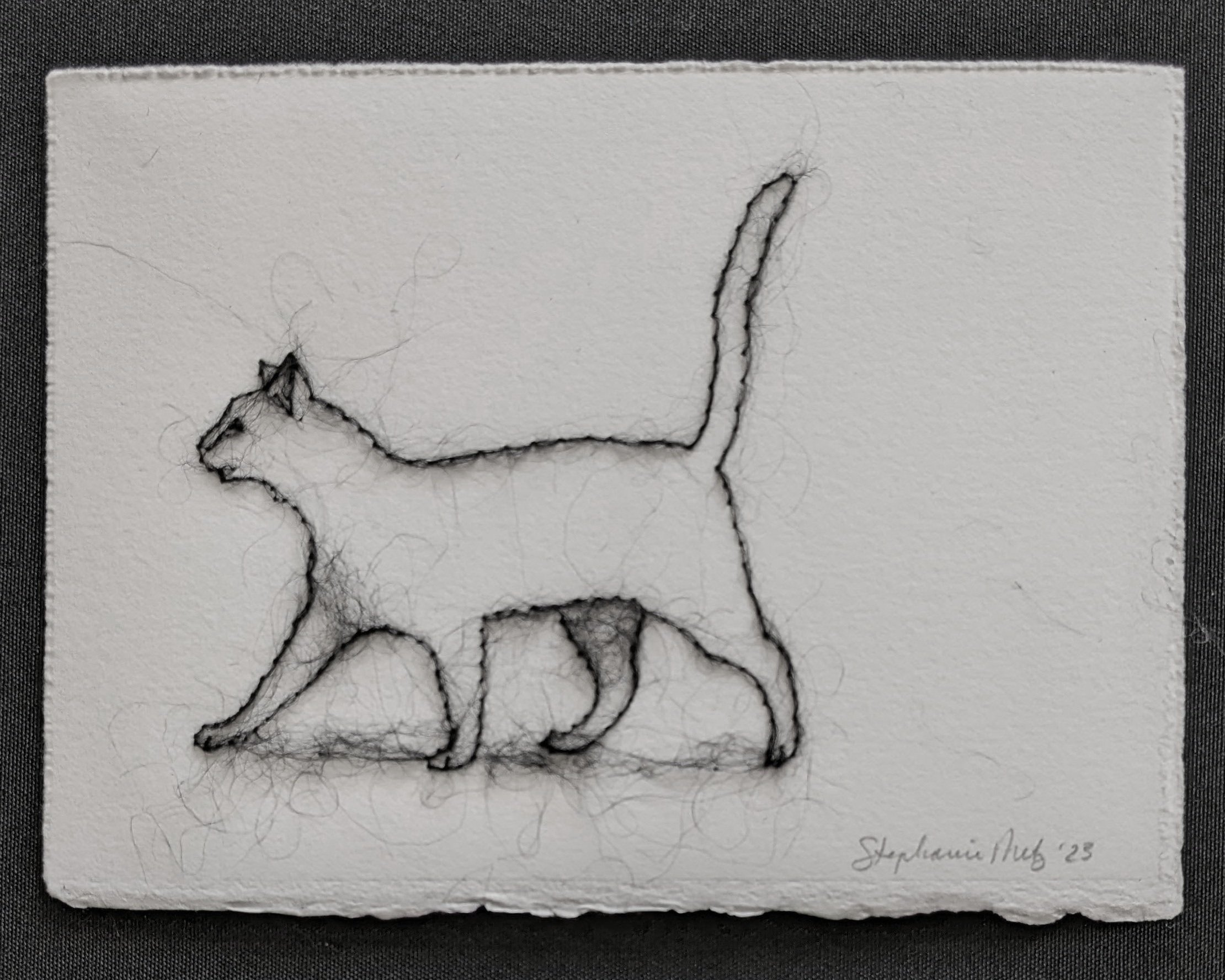Simply Complex: Why the Simplest Marks Can Take The Longest Time
Some of my artmaking takes a LOT of time and labor for an individual piece; any of my human-sized Hanging Pods come to mind. Each of those creations seems nearly heroic in effort, and its resulting size and presence tend to impress. Yet some forms of my artmaking take relatively little time to execute -- although they also require hidden years of practice and experience to be able to bring them into existence.
Here I’m thinking of my simple, elegant little wool drawings. I tend to make these small (5x7 or 8x10) compositions during in-between-times in my studio and personal life. They’re often line drawings with a little shading to create the impression of an individual living creature. I use the word ‘simple’ only in that they eloquently capture an animal through an efficiently restrained application of fiber through paper.
But manipulating fibers just the right amount through tiny holes in unforgivingly smooth paper is a fussy process. That apparent simplicity comes about through a sustained investment in curiosity and labor.
I’m reminded of a video of a young gymnast in which her incredible skills were labeled as ‘effortless’, when in fact they are the result of extreme and rigorous effort. You don’t see the sweaty hours of practice, the injuries, the sacrifices, and the compromises that go into that singular, focused, smooth, perfect performance captured forever in video.
Here’s a quote I had on my bulletin board in college from the choreographer and dancer Martha Graham:
“Behind one perfect leap are hundreds of leaps taken over a period of years. Is it not more strange that freedom should be acquired by discipline than that spontaneity, that most natural-seeming of all moods, is not chance or happy accident, but a selected circumstance achieved by intention and design?”
Her quote echoed the spirit of my figurative studies professor Paul Buckner who would talk us through carefully observed anatomy lessons, pointing out details and explaining how surfaces changed as the model moved and the muscles, fat, bones, and tendons interacted. We’d spend hours and days on long poses making pencil drawings or sculptures in clay. Every so often he’d have us make charcoal gesture drawings-- quick, physical scrawling marks on paper as the model took dynamic thirty-second poses before changing to the next position. Over the course of the semester my gesture drawings became more sure, more recognizable. My stick of charcoal seemed to know where to linger, where to be broad or fine, dark or faint. I didn’t have to think about the motions even as I became increasingly able to capture our model in brief flashes thanks to all the time getting to know bodies in depth.
Gesture drawing, Stephanie (Goetsch) Metz, 1996
My little wool drawings are like that. They don’t take as much direct time to make as my more involved works-- maybe two, three, five hours-- but their foundation is deep and wide. I’ve been ‘drawing’ with wool fibers through paper for sixteen years now, and drawing animals from life and from photographs for over forty years (!).
I first came up with the idea of using wool to draw in 2006; I wanted to see if I could assemble dark-colored fibers on a flat surface and manipulate them to stay in place, but first I thought I’d adhere them to paper somehow. That ‘failed’ experiment simply pointed me in a different direction, and I thought I’d try stabbing the wool THROUGH the paper with a felting needle, the same tool I use for sculpting. Iterations of types of paper, types of wool, backing material (since you can’t poke right into a wooden table without breaking a needle) and how much fiber to push through the paper or leave on the surface were part of the journey. And practice. Lots of practice.
Here’s another quote I have on my studio wall; it’s from Ellen Winner, author of ‘How Art Works: A Psychological Exploration,’ and it’s a doozy:
“When people are told that a work of art took a very long time to create, their evaluations of that work go up. But if you prime people to think about talent, then works that are made very quickly are valued more.”
So, two completely opposite responses. It’s interesting- do you find you value things more because they’re costly in terms of labor hours, or because their source is an expert at the top of their game who can ‘effortlessly’ nail it?
Does it matter what realm we’re talking about? Practicing law, emergency medicine, cooking, composing music… It all takes time and practice that might vary widely between the long arc of a life and the short task.
I get asked a lot about how much time goes into any given piece. I don't think the questioners are necessarily assessing my hourly rate; I think they’re simply curious, and want to find a yardstick to compare what they do in a given amount of time. But as you can see, that answer is complicated. Sometimes the things that take the least time conceal the most expertise.






